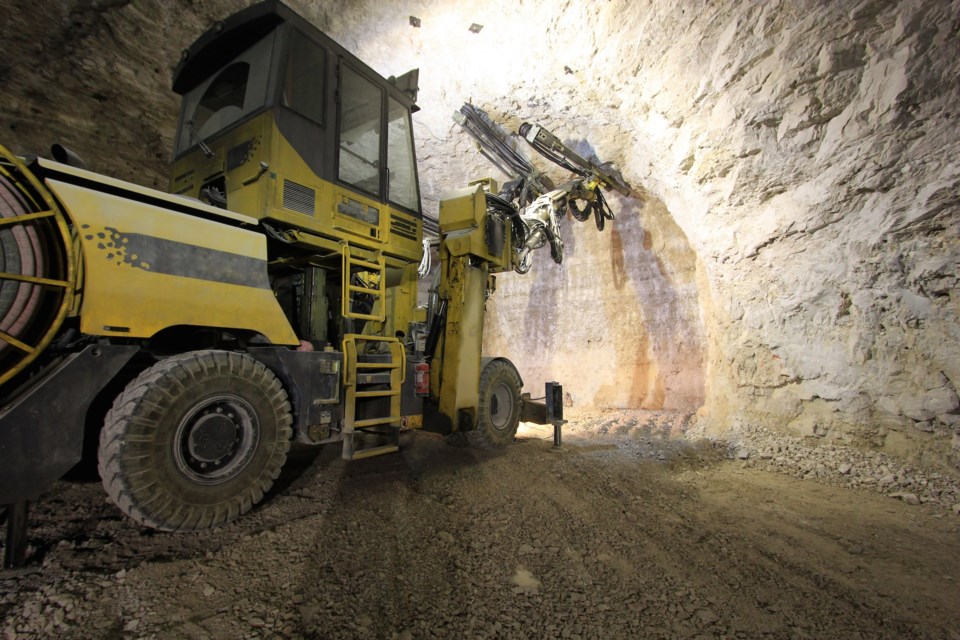The Pan-Northern Mining Research Alliance (PNMRA) will be meeting in Sault Ste. Marie this fall to identify and communicate its funding needs to both federal and provincial governments.
The alliance - which counts Algoma University and Sault College as members - is a collaborative effort between ten post-secondary institutions in northern Ontario.
“The alliance is going to seek industry engagement, supports and collaboration through targeted research opportunities,” said Dr. Pedro Antunes, who is the executive research lead and Canada Research Chair at Algoma University. “The idea is to positively influence government priorities and industry needs that will benefit all of northern Ontario.”
The alliance’s first meeting took place last July at Laurentian University in Sudbury, where a number of key themes were agreed upon: Partnerships and shared resources, diversity and leadership, health, partnership collaboration, First Nations, planning, climate change and environment and technology.
Antunes says that post-secondary institutions throughout northern Ontario were approached by the provincial government to form an alliance that would be tasked to solve challenges related to the mining sector.
PNMRA will be working closely with funding agencies - such as FedNor and the Northern Ontario Heritage Fund Corporation (NOHFC) - as well as the private sector in order to align itself with the needs of the mining industry in northern Ontario.
Forming an alliance, Antunes says, will help all member colleges and universities receive funding from both public and private sectors.
“We need to identify with private sector partners, where the priorities are, how we could best as universities help them in preparing, for example, new talent - people that are trained, qualified personnel for their industries, and also the research and innovation that’s required to enhance mining,” Antunes said.
Ring of Fire a priorityOne of the challenges identified by the province and PNMRA is the controversial Ring of Fire project, which has seen the province employing a divide and conquer approach with the nine First Nations that would be impacted by the construction of an access road into the chromite exploration and mining project.
Antunes says that post-secondary students will be involved in addressing challenges as the PNMRA moves forward with research projects related to the Ring of Fire.
“There’s a lot of challenges there that need to be addressed head on, and it needs a coordinated approach, and it needs an interdisciplinary approach,” Antunes said.
“We’re putting all this critical mass in place and managing resources, leveraging all the talent at different universities towards this common goal,” he continued. “I think that’s the most important piece here.”
It’s the second time that Algoma University has publicly endorsed a project related to the Ring of Fire.
In January, university president Asima Vezina requested letters of support for the City of Sault Ste. Marie’s ferrochrome smelter bid - a project linked to the Ring of Fire - from all of its departments.
When asked if he’s encouraged by premier Doug Ford’s promise to build a road into the Ring of Fire, Antunes says that the alliance’s work will help the province in doing its due diligence.
“We are pleased to see that as an alliance that the efforts will continue, and that’s also part of the reason why the alliance came together,” Antunes said. “We as a province and a country are better prepared to get this right from all sorts of points of view - economic, environmental - so that we can cover these areas extremely well.”
Antunes says the PNMRA will follow up on action items from its two previous meetings in the months leading up to the alliance’s next meeting in Sault Ste. Marie Nov 30.
The alliance could also potentially brief the Ministry of Energy, Northern Development and Mines on its progress, as well as identifying and communicating its funding needs to FedNor and NOHFC during that meeting.
“It’s still at the early stages of building this initiative,” said Antunes. “What’s special here, I think, is that it’s all these northern Ontario academic institutions working together, meeting regularly towards a common goal, and the common goal is very important for the province and for Canada, because it focuses on mining - and we have a lot of mining resources, and history of mining in Ontario.”
Neskantaga First Nation Chief Wayne Moonias and Eabametoong First Nation Chief Elizabeth Atlookan were unavailable for comment.
- with files from Northern Ontario Business
